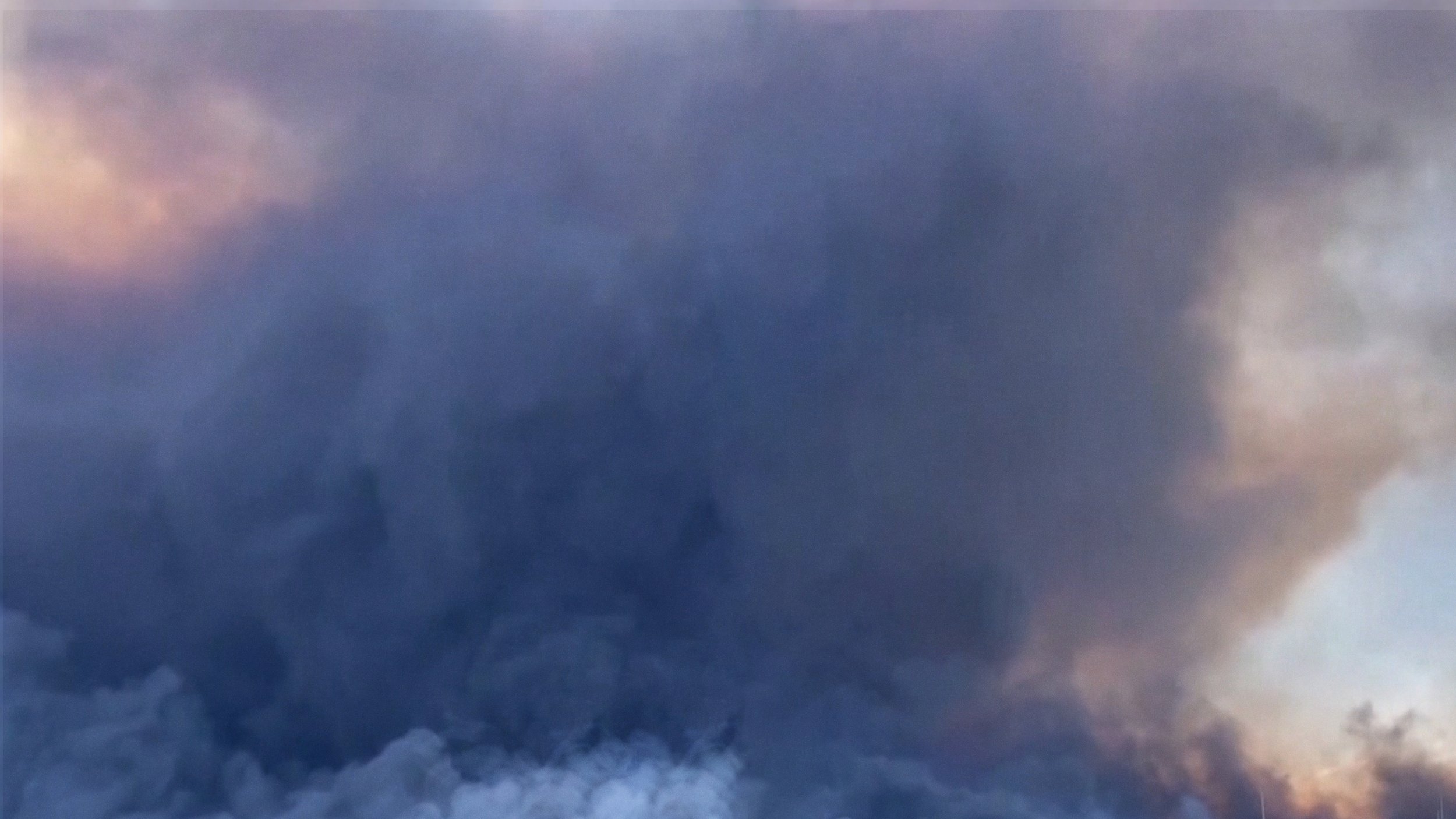In The Ashes
The firefighters, Victims and Survivors of Lahaina's Deadly Inferno
For the subjects of this piece, the challenge is: How do we hold people accountable? How do we prevent this from happening again? What can we learn from this?
For me the challenge was: How do we make this highly-familiar archival footage feel new? How do we seamlessly weave it with new material? How in god’s name are we going visualize wind?
Although for the subjects of this piece, those questions are still arriving at dead-ends and finger pointing, for the incredible team that I worked with on this piece, a wildly fulfilling and creative experiment was born.
NBC News’ Tom Llamas reveals new details of the blaze that tore through Lahaina. Firefighters reflect on the inferno, survivors share what life looks like now, and a former official speaks out, saying more could have been done to prevent catastrophe.

Scenes from In The Ashes
Opening
This opening scene was one of the first things I envisioned as the piece started to come together. I explained it to my producer as, “a postcard that goes wrong.” I wanted an audience to both see the beauty of Maui before the fire, and also feel disarmed and at-ease enough that once the first footage of the destruction comes on screen, that transition is a shock.
From there, I took an earlier concept of opening on footage from the day of the fire, and used it as sporadic flashes near our crescendo, trying to mimc the way survivors might still picture and remember it: in scattered and horrifying flashes of terror.
“It can’t get worse than this…”
The two main challenges with this section of story were: how to make this footage and these clips that had been seen over and over when the fires first happened feel unique to the way were telling the story, and how to make the audience understand just how fast this fire spread and how quickly it became uncontrollable.
This was mostly solved by careful selection of specific kinds of visuals from the UGC and also very specific music choices and sound design, building in intensity to that final drop with the drone footage that was shot near the end of the evening.
The Wind
This piece greatly relied on visuals of “the elements,” sometimes serving us in literal ways (the fire) and at times in more poetic ways (the wind). Treatment of fire footage felt like an easier lift, but when the firefighters discuss how bad the winds were, there was the more standard approach of showing trees, but our crew had captured the most stunning shots of the ocean off the coast of Maui.
This led to one of my favorite visual moments in the piece: the crashing and ever-shifting waves of the ocean showcasing the terrifying power of the wind.
Closing Scene
In a piece that up to this point has felt like a constant roller coaster of horrific imagery, personal grievances, and investigative context, I wanted to end in the most reverent way possible, something we hadn’t had a real chance to do up until this point. We’ve sat in stillness many times, but almost always with a tinge of anger or disbelief. I saved all of our footage from the memorial until the end to help achieve this, also seeking to ultimately give the 100+ victims who died the final moment.
Because the piece needed to end with informational text updates, we had two options: go full graphic treatment, or use footage. I wanted to end us where we began, with the elements once again ushering us out—the water showing the passage of time, repetitive and slow, and the trees serving as visualization of nature’s “shelter,” while so many still are without it.
CREDITS
Senior Investigative Producer: Maite Amorebieta
Coordinating Producer: Ignacio Torres
Additional Producer: Brock Stoneham
Booking Producers: Hayley Walker, Sumiko Moots
Associate Producer: Didi Martinez
Cinematography: David Necochea, Brock Stoneham
Additional Reporting: Jonathan Schuppe, David Douglas, Olivia Santini
Finishing Editor: Tate James
Art Director: Ben Plimpton
Senior Motion Graphic Artists: Livia Lenhoff, Mike Basilico
Senior Director, Post Production: Thomas Parrinello
Technical Production Support: John Makely, Joseph Dibble
Production Managers: DeAngelo Moore, Jonathan Rinkerman
Post-Production Manager: Jesse Spellman
Edit Operations Lead: Mike Mazzotta
Executive Editor, Investigative Unit: Peter Klein
Senior Executive Editor, Digital Video Operations: Shalani Sharma
Senior VP, NBC News Digital: Catherine Kim